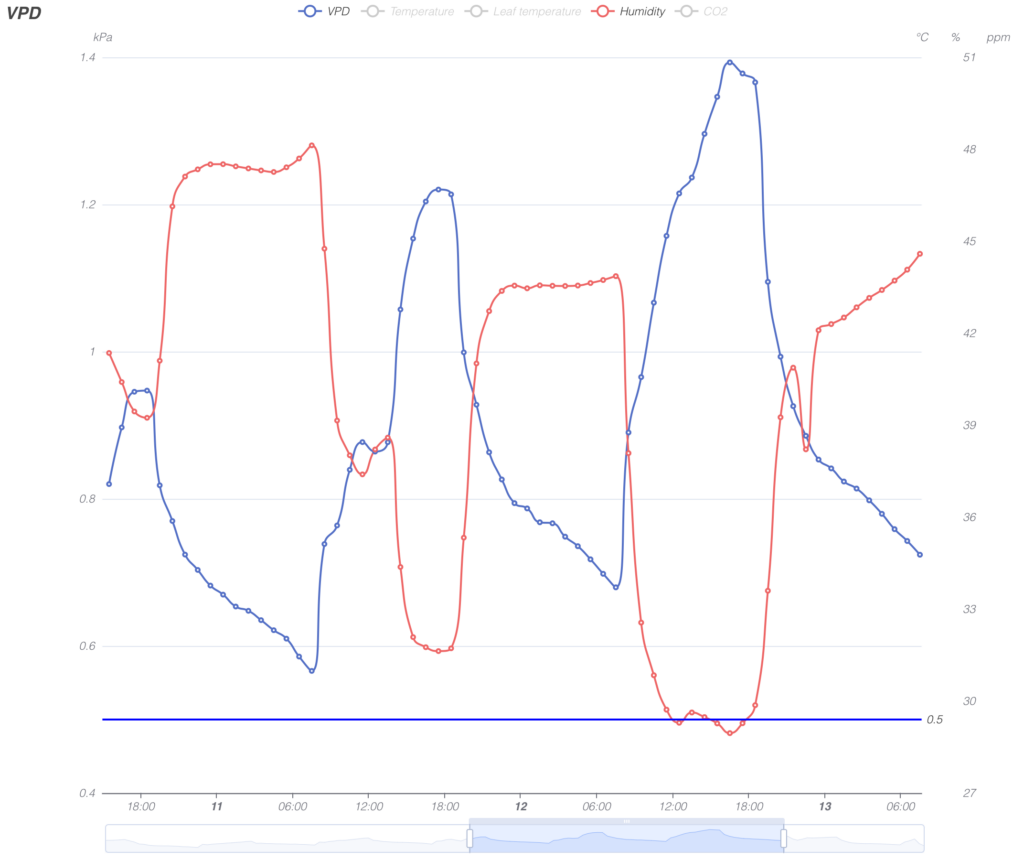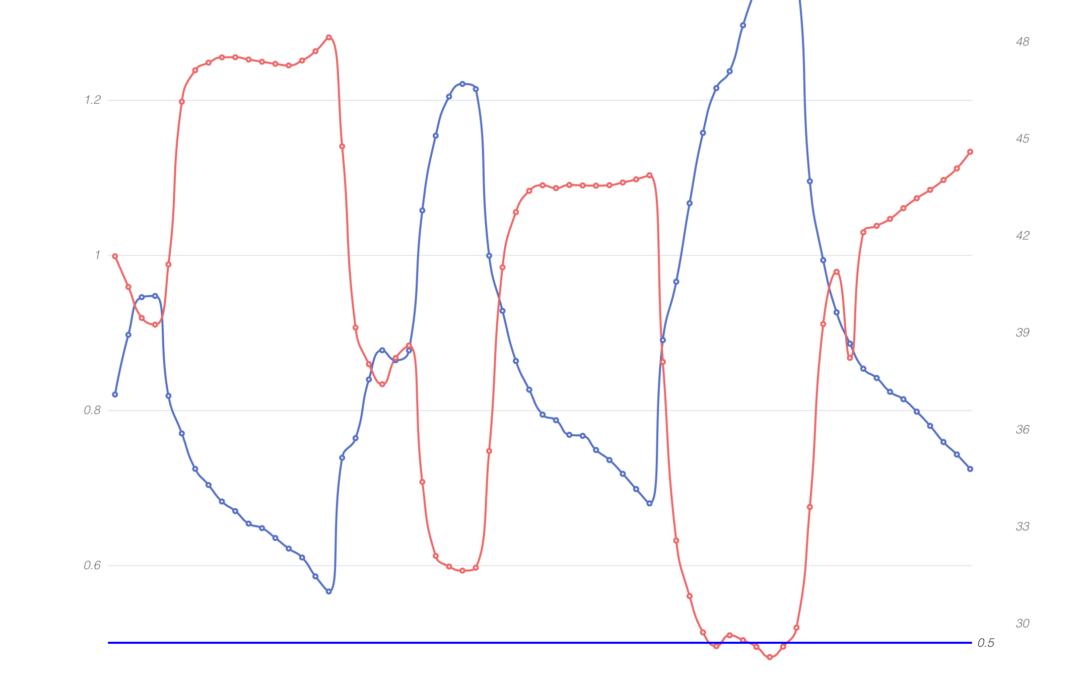
For an easier comparison simply toggle off what you don’t want to see (Ambient and leaf temp.)
And what you see is in this instance is the adverse relation between humidity and VPD. In the bottom screen you can crop the timeframe you need.
Now you make managerial decisions on how to influence these highs and lows.
(info – Pulsegrow)
VPD at Night
If you didn’t already know, VPD is a measurement related to humidity and temperature. It is an absolute measure of how much more moisture the air can hold at the current temperature. VPD is very important for plants because it controls stomatal opening, transpiration rate, CO2 uptake, nutrient uptake, and plant stress. It also directly impacts yields[1][2]. Ideal VPD can boost yields by 20% or more.
VPD Measured At Night. Click for an Interactive Chart
What Plants Do At Night
At night, most plants close their stomata and stop photosynthesis since there is no light available. This closure prevents water from escaping through the open pores, and significantly reduces transpiration. See below a comparison of day and night transpiration as measured in C. Sativa hemp plants:
Transpiration is about 10x lower at night than it is during the day. [1]
Instead of photosynthesis, at night, plants mostly perform respiration. Like in humans, respiration in plants converts stored sugars (made by photosynthesis) to energy. As you may already know, that means plants actually produce CO2 during the night!
How to Make the Most of the Night Period
You may be wondering what you should do as a cultivator during the night period, if the plants aren’t photosynthesizing. There are a couple of key things you can use the night period to achieve.
- Disease Prevention: use nighttime to keep RH on the lower end to prevent mold such as bud rot and powdery mildew.
- Keep Nighttime VPD Close to Daytime VPD: plants still need to release CO2 created by respiration through the stomata, so keep VPD relatively close to the daytime ranges.
Minimize VPD Swings:
Vpd swings from day to night. Click for an Interactive Chart.
According to research[3] done in 2021 Frequent VPD swings greater than 0.4kPa can drop yields by as much as 20%:


